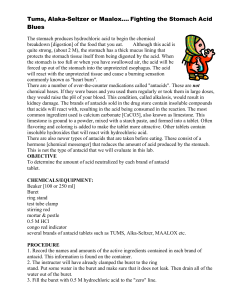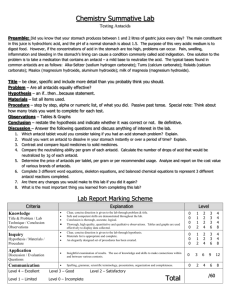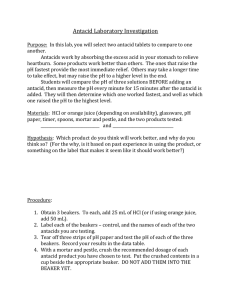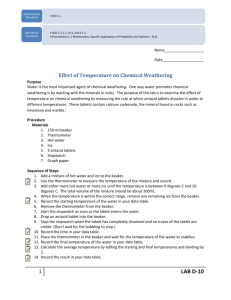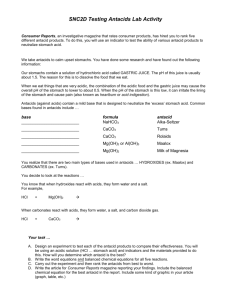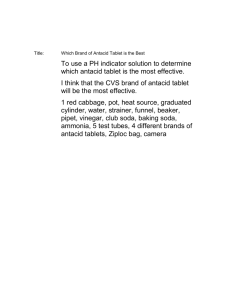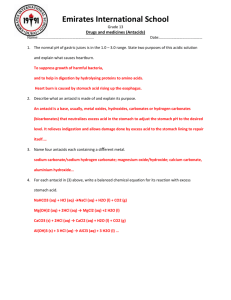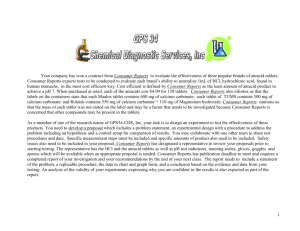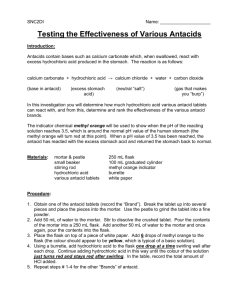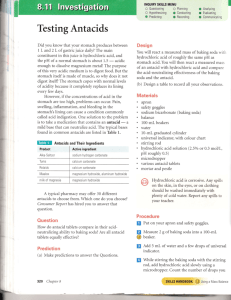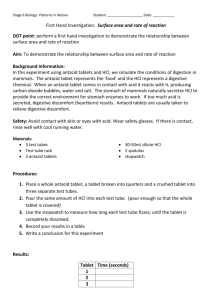File
advertisement
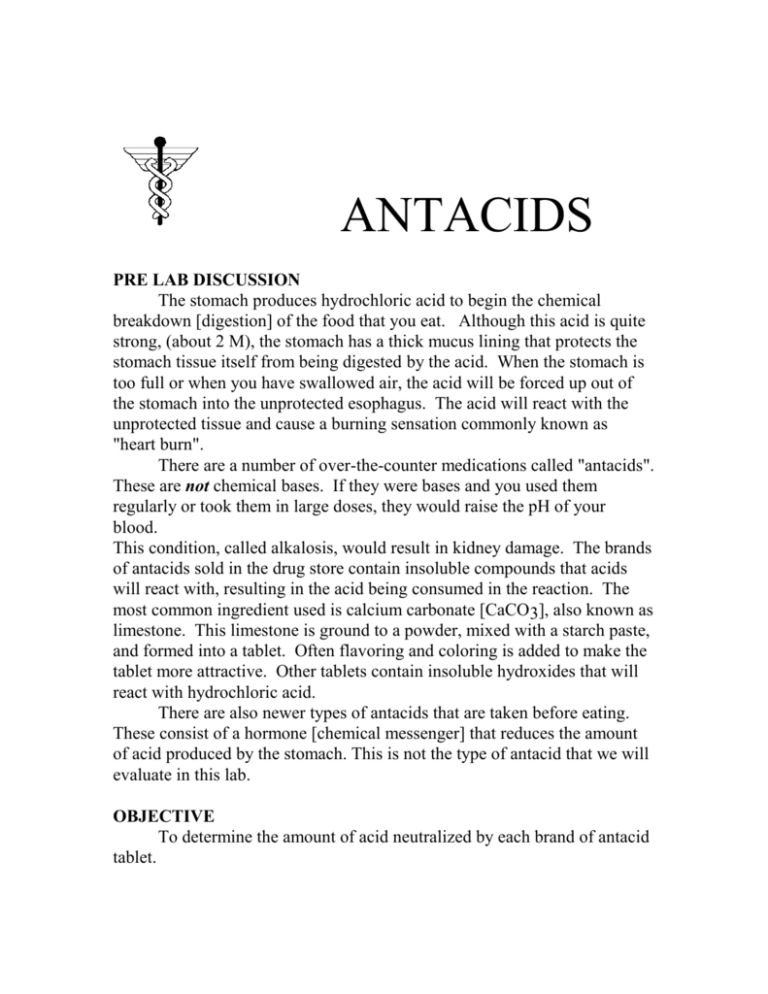
ANTACIDS PRE LAB DISCUSSION The stomach produces hydrochloric acid to begin the chemical breakdown [digestion] of the food that you eat. Although this acid is quite strong, (about 2 M), the stomach has a thick mucus lining that protects the stomach tissue itself from being digested by the acid. When the stomach is too full or when you have swallowed air, the acid will be forced up out of the stomach into the unprotected esophagus. The acid will react with the unprotected tissue and cause a burning sensation commonly known as "heart burn". There are a number of over-the-counter medications called "antacids". These are not chemical bases. If they were bases and you used them regularly or took them in large doses, they would raise the pH of your blood. This condition, called alkalosis, would result in kidney damage. The brands of antacids sold in the drug store contain insoluble compounds that acids will react with, resulting in the acid being consumed in the reaction. The most common ingredient used is calcium carbonate [CaCO3], also known as limestone. This limestone is ground to a powder, mixed with a starch paste, and formed into a tablet. Often flavoring and coloring is added to make the tablet more attractive. Other tablets contain insoluble hydroxides that will react with hydrochloric acid. There are also newer types of antacids that are taken before eating. These consist of a hormone [chemical messenger] that reduces the amount of acid produced by the stomach. This is not the type of antacid that we will evaluate in this lab. OBJECTIVE To determine the amount of acid neutralized by each brand of antacid tablet. CHEMICALS/EQUIPMENT: Beaker [100 or 250 ml] Buret1, ring stand, test tube clamp, stirring rod, mortar & pestle, 0.5 M hydrochloric acid, congo red indicator2, several brands of antacid tablets such as TUMS, ROLAIDS, MAALOX etc. [white colored tablets are better in this lab] PROCEDURE 1. Record the names and amounts of the active ingredients contained in each brand of antacid. This information is found on the container. 2. The instructor will have already clamped the buret to the ring stand. Put some water in the buret and make sure that it does not leak. Then, practice dripping the water into a beaker. Then drain all of the water out of the buret. 3. Fill the buret with hydrochloric acid to the "zero" line. 4. Crush one antacid tablet using a DRY mortar and pestle. 5. Place the crushed tablet in a clean beaker and add about 50 ml of distilled water. Then add 3-4 drops of congo red indicator. 6. Place the beaker under the buret. The acid should be added drop wise and stirred until the color changes to blue. Since the antacid is not water soluble, the first blue color is not necessary the end point of this titration. 7. Continue stirring until the blue color remains for five minutes after the last drop of acid was added. This is the end point. 8. Record the amount of acid used by this tablet. 1If burets are not available, the students can use a dropping pipette. The students can count the number of drops needed to reach the end point. This can be just as accurate as the when a buret is used. 2CONGO RED indicator solution must be purchased from a scientific supply company. 2 9. Repeat this procedure for each brand of antacid tablet. DATA BRAND TESTED INGREDIENTS ML of HCl reacted THINKING SCIENTIFICALLY 1. Did the tablets dissolve in water? 2. Why was it necessary to stir for five minutes in order to be sure that the end point had been obtained? 3. Based on this lab and your knowledge, which brand of tablet would you recommend? Write an essay to explain you reasons for this recommendation. 3
